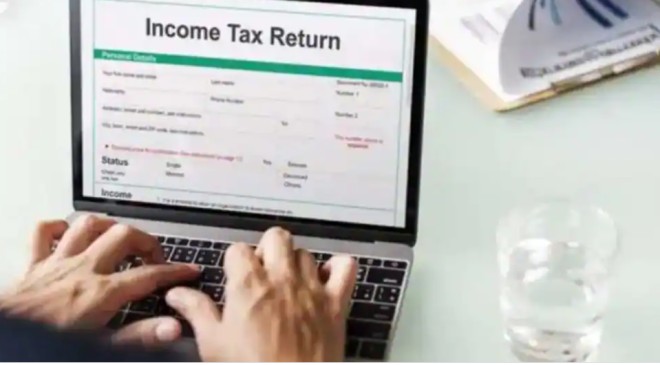Income Tax Return (ITR) e-filing on Income Tax Portal: The income tax return (ITR) filing process for the financial year 2023-24 (assessment year 2024-25) has commenced on the e-filing income tax portal. The commonly used ITR forms were made available on April 1 to facilitate early and convenient filing of tax returns.
Read More: Aadhaar-PAN link: Income Tax Department issues step-by-step guide to avoid higher TDS. Check here
Although the ITR forms are accessible, it is advisable for salaried individuals to postpone filing their returns until June 15, according to an ET report by Preeti Motiani. The reason behind this recommendation is that their Annual Information Statements (AIS) and Form 26AS are typically fully updated by May 31, and salaried individuals receive their TDS certificates within 15 days from this date.
While some data may start appearing in AIS and Form 26AS before May 31, the information for the last quarter of the previous financial year is usually updated by May 31.
Taxpayers who submit returns based on incomplete data may face penalties if their income is underreported due to missing information. Therefore, it is sensible to wait until June 15. Salaried individuals have until July 31, 2024, to file their income tax returns for the financial year 2023-24 (assessment year 2024-25).
Banks and other financial institutions must submit a Statement of Financial Transactions (SFT) to the income tax department annually. SFTs provide the income tax department with information on various transactions carried out by taxpayers during the financial year.
These statements encompass income from shares, mutual funds, dividends, interest from savings bank accounts, fixed deposits, public provident fund accounts, credit card bill payments, and more. The AIS, accessible to taxpayers, is updated once these institutions file their SFTs.
AIS provides a comprehensive record of an individual’s financial transactions, regardless of whether tax was deducted or not. It includes details such as total salary income, tax deducted and deposited, and interest earned from savings bank accounts, even if no tax was deducted on the interest.
When it comes to tax deducted at source (TDS) on incomes, the tax deductor, which can be companies or banks, has until May 31 to file a TDS return for the last quarter of the fiscal year. Although tax is deducted and deposited monthly, TDS returns are filed quarterly, as per income tax laws.
Once the tax deductor files the TDS return, the tax deposited against the relevant PAN will be reflected in Form 26AS, which serves as a tax passbook showing the total taxes deducted/collected against a PAN. Form 26AS also includes Tax Collected at Source (TCS) deductions on foreign travel or foreign remittances.
Read More: ITR 2024: Mandatory and Optional, Keep These Documents For Income Tax Return Filing, Check Full List
Abhishek Soni, CEO of Tax2Win.in, an income tax return filing platform, explains, “A tax deductor is required to file TDS/TCS returns by May 31 for the tax deducted in the last quarter of a financial year (between January and March). Further, banks and other financial institutions are required to file SFT by May 31 to update the data in AIS. Hence, till TDS/TCS return and SFT is filed, the information available on the income tax portal via AIS and Form 26AS is incomplete.”
Filing an income tax return using incomplete information from AIS may result in an individual receiving an income tax notice for underreporting income due to relying on this incomplete data.
As per income tax regulations, a deductor must provide a TDS/TCS certificate after filing a TDS/TCS return. The deadline for issuing TDS certificates is 15 days from the date of filing the TDS return. Therefore, your employer should provide you with Form 16 (TDS certificate) no later than June 15.
Additionally, if banks, mutual funds, or companies have deducted taxes during FY 2023-24 (which ended on March 31, 2024), they must issue Form 16A (TDS certificates) to individuals by this date. Although TDS returns can be filed before the deadline, and TDS certificates can be issued earlier than June 15, in most cases, the certificates are typically issued by this date.
Taxpayers should verify that the tax deducted as shown in Form 16/Form 16A is consistent with the information in AIS and Form 26AS. Any discrepancies may lead to difficulties for the taxpayer.
Soni states, “The income tax department can send tax notices if the information available to them via an individual’s AIS/Form 26AS does not match with what the individual has mentioned in the income tax return. The tax department will allow tax credit on what is shown in Form 26AS/AIS.”
It is important to note that Form 16 (TDS certificate) simplifies the process of filing tax returns for salaried individuals. The TDS certificate consists of two parts: Part A and Part B. Part A displays the taxes deducted during the financial year, while Part B shows the total salary income paid by an employer and the tax deducted from this salary. Any deductions claimed by employees (under either the old or new tax regime) will also be reflected in Form 16.
Filing an incorrect income in your Income Tax Return can lead to serious consequences. The assessing officer may classify this as either misreporting or under-reporting of income, resulting in penalties ranging from 50% to 200% of the tax payable on the under-reported amount. These penalties are imposed under Section 270A of the Income Tax Act, 1961.
According to Soni, “If the income is declared less than actual due to misreporting of income, then the penalty will be 200% of the tax payable on such misreported income. However, if the income is under-reported due to any other reason (such as failure to report income in the ITR), then the penalty will be 50% of tax payable on the under-reported income.”
Therefore, it is crucial to ensure that the income reported in the ITR is accurate. If an individual discovers that they have filed their ITR based on incorrect income information, they have the option to file a revised ITR by December 31, 2024. Nevertheless, it is always advisable to file the original ITR using accurate and complete income information.
Read More: How To Prepare Yourself For Upcoming Tax Season India?
In cases where no TDS has been deducted from your income, no TCS has been collected from you, and you have complete information about your total income earned from various sources during the financial year 2023-24 (assessment year 2024-25), you may proceed with filing your ITR without waiting until June 15.





































